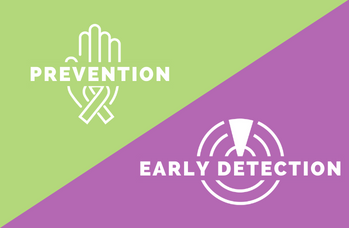ACS Releases 2025 Facts & Figures
02 February, 2025
The American Cancer Society recently released its annual Cancer Facts and Figures report with data and analysis on cancer incidence and mortality across the United States. Major findings in this year’s report show that new cases of cancer continue to rise in women younger than 50, but overall cancer deaths continue to decline.
“Despite the decreases in death rates, cancer remains the second leading cause of death in the US, and the leading cause of death in people younger than 85,” ACS researchers note.
On a more local level, Nevada has the 3rd lowest overall rate of cancer incidence in the nation (397.5 per 100,000), behind Puerto Rico and New Mexico. Nevada is 23rd from the lowest for cancer mortality, however, tied with the national average at 146 deaths per 100,000.
Notably, Nevada has the 2nd lowest incidence of breast cancer in the U.S. (114.7), but the 6th highest rate of mortality (21.7).
Cancer Rates Among Women
Over the past two decades cancer incidence in women has increased from 51% higher than men in 2002 to 82% higher in 2021. That means women younger than 50 are nearly twice as likely to be diagnosed with cancer than men in the same age group. During that same time, cancer incidence for men younger than 50 remained relatively stable.
Breast cancer is the primary driver of increasing cancer incidence among women.
ACS researchers also note that for people ages 50-64, cancer incidence for men has slowly declined while that of women has slowly increased and now the rates are similar. However, rates for new cases of lung cancer among women in this age group have surpassed those for men.
Racial Disparities Persist
According to the ACS report, “American Indian and Alaska Native (AIAN) people are 2 to 3 times more likely to die from cancers of the cervix, kidney, liver, and stomach compared to white people. Black people are 2 times more likely to die from prostate, stomach, and uterine cancer than white people.”
Nationally, overall incidence of cancer is highest among AIAN people, at a rate of 497.2 per 100,000, with AIAN women having higher incidence rates than women of other races. For men, AIAN have the second-highest incidence rate (520.1) behind Black men (535). In Nevada, AIAN people have a generally lower rate of cancers and lower mortality than whites, Blacks, and Asian/Pacific Islanders.
The researchers note that these disparities are not necessarily a result of race/ethnicity but rather the “influence of discrimination and inequality in health disparities,” including persistent poverty and smoking.
Relative Survival Rates Improve
Data shows that the 5-year relative survival rate for most cancers has improved over the last 40 years. A handful of cancers continue to have high rates of 5-year survival including thyroid (98%), prostate (97%), testis (95%), and melanoma (94%). Only two types of cancer—uterine and cervical—have seen their survival rates decline.
Cancer screening—and incidental detection from imaging for other cancers—is credited for improvements in cancer survival. Advancements in treatment have also greatly improved survival of cancers including blood cancers and metastatic melanoma.
Liver cancer has seen the largest increase in relative survival, from 3% to 22%, but is still among the cancers with the lowest survival rates. In Nevada, incidence of liver cancer has increased since 2010 when the rate was 6.3 per 100,000, reaching 8.8 cases per 100,000 in 2022.
Lung (27%), esophagus (22%) and pancreas (13%) also have low survival rates.
Notably, pancreatic cancer is also a leading cause of cancer death because it not only has a low survival rate but also has a high incidence rate. ACS researchers believe this is due to more people in the U.S. being overweight or obese, which is a risk factor for pancreatic cancer. In Nevada, pancreatic cancer is the 11th most commonly diagnosed cancer and the 5th most common cause of cancer death.
Cancer Among Children and Adolescents
ACS researchers note that cancer continues to be the second leading cause of death among children ages 1-14, after accidents, and the fourth most common cause of death among adolescents age 15-19. Nearly 15,000 people ages 19 and younger are expected to be diagnosed with cancer in 2025 and more than 1,600 will die of cancer.
Data shows that cancer rates in children have declined slightly since 2015 while mortality has declined steadily since 1970. Improved treatments for leukemia are credited with much of the improvement mortality rates.
Read the full report here and explore more data in the ACS Cancer Statistics Center.
You May Also Like

Cancer Epidemiologist Joins NCCR
05.17.2024
We're excited to welcome Patience Gbafa, MPH, as the Nevada Central Cancer Registry's new cancer epidemiologist.

2024 Head & Neck Cancer Data and Resources
03.25.2024
Head and neck cancers are a category of cancers that can form in the oral cavity, throat, voice box, salivary glands, paranasal sinuses and nasal

National Cancer Registrars Week Recognized April 4-8
04.04.2022
If there’s anyone that seems to fly under the radar in cancer control, it’s probably the cancer registrar.